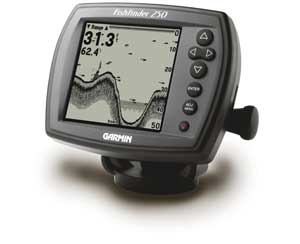
Winter’s the time to load the boat with sheepshead, drum, redfish and flounder at this Lafourche Parish port.
The first water temperature sensor I saw in a tackle shop was a weighted thermometer on a string that came with a list of fish species and the temperature that each species considered ideal. The premise seemed to be that when you found the ideal temperature, you’d find the fish. I always wondered who came up with that list and how they determined the comfort level of each species down to an exact degree of temperature.
I also wondered if we fishermen were expected to believe that fish were smart enough to know that the water temperature only a few miles away was ideal, spurring them to haul on over there, leaving water that was warmer or colder.
While water temperature changes from one part of a lake to another, it also stratifies vertically. This fact has long caused fishermen to search for the thermocline, that depth at which the temperature changes the greatest number of degrees in the shortest span of depth.
As temperature sensing technology evolved, electronic gauges appeared with weighted probes attached to cords that were marked at 1-foot intervals.
This let you read the temperature at any depth almost instantly, a great improvement over dropping a thermometer down a foot or two at a time and then trying to retrieve it fast enough to get a reading for a particular depth before the reading could change on the way up.
Modern fish finders have largely replaced stand-alone surface-temp gauges and depth probes. Most sounders now include a surface temp sensor built into their transom-mount transducers, and most are capable of displaying a thermocline by sensing the increased density of the cold water lying below the layer of warmer water above.
Some units can spot a thermocline while running in auto mode, but others require turning down their interference filtering and cranking up their sensitivity. The thermocline usually appears as a narrow, horizontal band of loosely concentrated dots.
Open-water anglers usually fish above the thermocline because it is generally thought that oxygen levels are greatly reduced below it. And, of course, fish seeking warmer water wouldn’t want to go down where it’s comparatively chilly.
I’ve never been able to buy into the ideal-temperature theory completely, but there is no arguing that fish are cold-blooded creatures and their metabolism is affected by the temperature of the water surrounding them.
Some 30 years of fishing southern reservoirs has also taught me that fish are most active within a certain temperature range, getting sluggish when the water gets too hot or too cold. And, water temperature also seems to have an affect on when fish spawn.
I take a conservative approach to fishing by temperature. In winter, I expect fish to be most active in the warmest water I can find. The sun is lower on the southern horizon this time of year, so I start by checking rocky shorelines on a lake’s north shore, where the sun has the best chance of warming the water.
I look for cooler water in the heat of summer, and usually find it at the deeper end of a reservoir near the dam. I check the southern shoreline for steep, shady cliffs and points that drop quickly into deep water.
I consider temperature an important variable, but I don’t base my entire fishing strategy on it.
Legendary bass angler Tom Mann once told me that he often caught fish where popular beliefs about temperature and oxygen said they couldn’t be. He said he depended more on his fish finder. If it showed bass or baitfish, he didn’t care why they were there, he’d stop and fish. If it didn’t show them, he’d keep moving until it did.
Sadly, Tom is no longer with us, but his advice remains some of the best I’ve ever taken.


